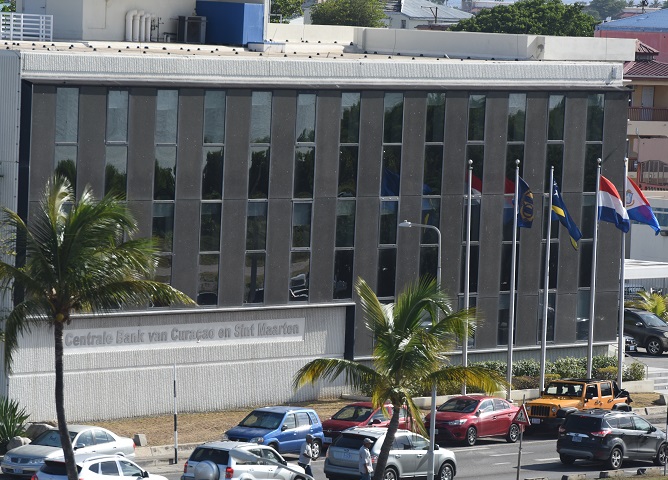WILLEMSTAD/PHILIPSBURG – The Centrale Bank van Curaçao en Sint Maarten (CBCS) decided to tighten its monetary policy stance further by raising the pledging rate1
by 75 basis points to 5.50%. The smaller increase compared to the hikes in 2022 is consistent with the projected rise of interest rates on the international financial markets, particularly the fed funds rate.
Although still solid, gross official reserves and the import coverage dropped in 2022 and are
expected to decline further, albeit at a slower pace, in 2023. Therefore, the Monetary Policy
Committee (MPC)2 of the CBCS will continue to monitor the economic and monetary developments in the monetary union closely and adjust the monetary policy stance if necessary.
The soaring international commodity prices, both oil and non-oil, have resulted in a sharp
deterioration of the monetary union’s terms of trade. Based on the actual figures up till the third quarter of 2022, the current account deficit of the monetary union is estimated to have widened to 22.8% of GDP in 2022. Still, the deficit is lower than projected at the time of the last meeting of the MPC at the end of November 2022.
“The downward revision of the current account deficit is induced primarily by a weaker projected decline in the net export of goods and services reflecting higher-than-expected exports of goods and services, particularly more foreign exchange receipts from stay-over tourism, transportation services, and bunkering activities. Imports increased, however, at a faster pace than initially anticipated, on the back of higher-than-projected international commodity prices, particularly food and oil prices”, explained dr. José Jardim, executive director of the CBCS.
“By contrast, the current account deficit is projected to narrow to 19.7% of GDP in 2023 reflecting primarily a projected increase in the net export of goods and services as the growth in exports, sustained by more foreign exchange earnings from the tourism sector and transportation services, will surpass the higher import bill. The gain in imports will be driven by higher domestic demand and tourism expenditures moderated by lower international oil prices”, he added.
Following a decline of NAf.257.7 million in 2022, gross official reserves are projected to drop further, albeit at a slower pace, in 2023 as external financing and capital transfers from abroad will be insufficient to cover the current account deficit. Meanwhile, the import coverage dropped according to the latest estimates from 5.0 months in December 2021 to 4.6 months in December 2022 and reached 4.5 months by the end of February 2023. Although the import coverage has been showing a declining trend, it is still well above the norm of 3 months. Meanwhile, the liquidity of the commercial banks decreased further in 2023, after almost halving in 2022.
1 The pledging rate is the rate at which commercial banks can borrow at the CBCS in case of a liquidity shortage.
2 The Monetary Policy Committee discusses the economic and monetary developments and the monetary policy stance at least on a quarterly basis. The Monetary Policy Committee takes decisions on the monetary policy stance and the deployment of monetary policy instruments that are ratified by the Board of Executive Directors of the CBCS.
The U.S. Federal Reserve’s (Fed) aggressive interest-rate-raising approach in 2022 has worked as the inflation has eased somewhat but remains elevated. The expectations are that inflation will further decline in 2023 due to, among other things, the easing of global supply chain bottlenecks, although gas prices have begun to climb again recently. As the inflation for 2023 is expected to be lower than in 2022, the Fed hikes are also expected to be lower. The increase in January 2023 was indeed less pronounced than previous hikes.
“An increase of the federal funds rate immediately affects the international money market rates and, consequently, the interest rates in the money market of the monetary union of Curaçao and Sint Maarten as the NAf. is pegged to the US dollar”, dr. Jardim explained.
”Against this background, the CBCS has decided to increase the pledging rate by 75 basis points to 5.50%, effective March 10, 2023. In addition, the CBCS will continue to focus on the extension of the average maturity of the outstanding balance of certificates of deposit (CDs) through offering longer maturities (i.e., 12, 26, and 52 weeks) on the bi-weekly auctions of CDs”, dr. Jardim stated.
Since the changes in the CD policy introduced in September 2022, the share of longer maturities increased, contributing to the extension of the average maturity of outstanding CDs. “Therefore, bank liquidity will be held longer domestically contributing to the maintenance of a solid foreign exchange position”, he finally added.





























